At first glance, it seems likely that plenty of people will scoff at any sort of a comparison between the St. Louis Blues’ Pavel Buchnevich and the New York Rangers‘ Kaapo Kakko, other than the fact they’re both right wings.
Buchnevich, after all, has been nearly a point-per-game player since arriving in the Gateway City almost three years ago, with 196 in 204 games over three seasons. He’s also the picture of versatility and well-roundedness, killing penalties, playing on the power play and driving possession with the Blues, who have outscored opponents 159-111 with the 28-year-old on the ice at 5-on-5. Buchnevich also carries the reputation of a great teammate with a light, happy-go-lucky personality in the dressing room.
Kakko? He posted career highs of 18 goals and 22 assists last season – his 40 points not coming close to Buchnevich’s career-best total of 76, achieved in 2021-22, his first season in St. Louis. Where Buchnevich is a top-six forward staple, Kakko has failed to stick on a top line in his nearly five seasons, his periodic promotions by three coaches not lasting long before he’s found himself back on the third unit, where he’s spent much of his NHL career. Kakko has only 10 goals in 49 games this season, as he was felled for six weeks by a leg injury, but had also managed only two goals and an assist in 20 games before getting hurt.
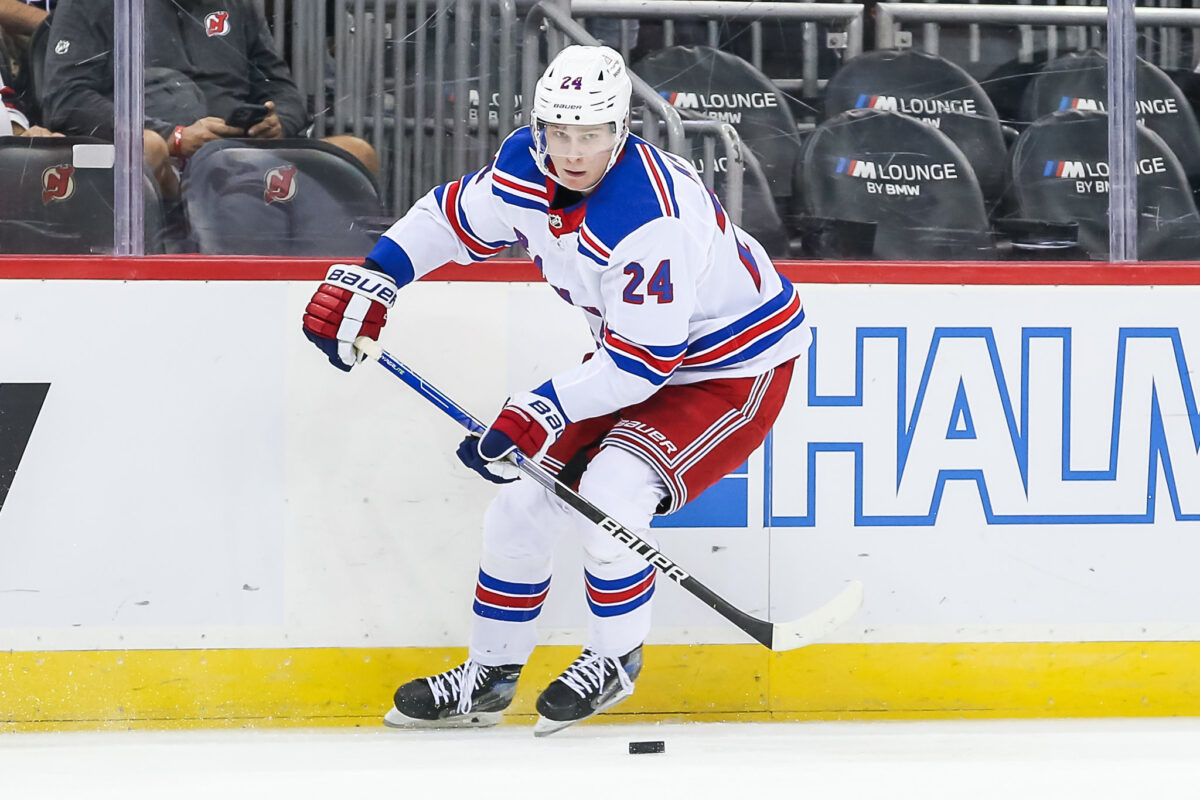
Also unlike Buchnevich, the 23-year-old Kakko seems unsure of himself and frankly, often appears less than enthusiastic to be playing in the best hockey league in the world. His goal celebrations – three of which have come in the last seven games – are generally accompanied by an expressionless response, without so much as a smile or much excitement. A slight raise of the stick is about the extent of the Turku, Finland native’s rejoicing.
So what, exactly, do Buchnevich and Kakko have in common? Well … there was a time not that long ago when Buchnevich all but WAS Kakko.
Amid speculation that the Rangers’ annual salary-cap crunch will force them to trade Kakko this summer rather than give him a significant contract extension, the front office would do well to consider that it risks more buyer’s regret in moving out a young right wing whose potential might not yet be fully tapped.
Like Kakko, Buchnevich’s Early NHL Years Included Youthful Frustration
In Buchnevich’s first four seasons from 2016-20, he was a promising but young and uncertain New York Rangers forward, the team’s third-round draft pick in 2013 by way of Cherepovets, Russia, trying to establish himself in the NHL while playing in a foreign country. Buchnevich was 21 when he made the team and played 41 games as a rookie, scoring eight goals with 12 assists.
Over the following three seasons, Buchnevich would record 43, 38 and 46 points in a Blueshirt. While his early-career production indeed outstrips Kakko’s, that only tells part of the story. The confident, upbeat, established NHLer of today possessed all of Kakko’s body language and more back then. Buchnevich came across as sullen and less than motivated on the ice, and angsty and sometimes victimized off of it. In January 2019, then-coach David Quinn had dropped him to the fourth line for an extended stay before making him a healthy scratch Jan. 30 of that year against the Philadelphia Flyers.
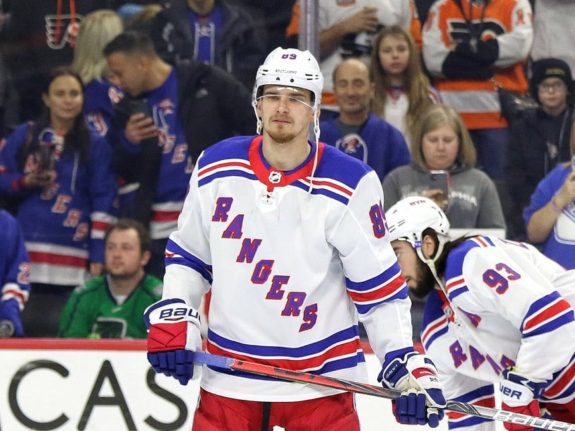
There was a reputation of poor practice habits. An attempt by Quinn to move Buchnevich to the left side failed almost immediately, the player unable or unwilling to adopt the different positioning required for such a switch. Through it all, Buchnevich wore a consistent frown, with an air of grumpiness and a woe-is-me vibe. Believe it or not, that was him.
Fast-forward to today, and Buchnevich’s near-constant smile and goofy personality lights up the Blues’ dressing room. Current and former Blues teammates and coaches describe a loquacious, engaging, energetic presence. They also describe a thoughtful player who has learned to focus the surly side of himself on opponents, as Buchnevich’s edgy, irritating traits now emerge on the ice, complementing his myriad of other skills. The failed wing switch under Quinn seems almost unbelievable now, with Buchnevich lining up at all three forward spots for St. Louis over the past three seasons.
Related: Rangers: Predicting Kaapo Kakko’s Next Contract
“Buchy, he is a fun guy and has got a great personality,” ex-Blues coach Craig Berube said in November 2023. “He’s a very good hockey player and very intelligent. As a coach, he’s going to challenge you with situations and questions at times about stuff, which is great. He’s got good ideas.
“It’s funny, during the game, though, his personality does change a bit. He’s an ornery player. He’s got that bite and attitude you like in a game. He wants the team to do well, and he wants to do well, and when it’s not happening, he’s not in a very good mood.” (From ‘The Best of Buchy: Blues Teammates on Pavel Buchnevich – Fantasy Fraud, Happy Grouch and Hockey Guru’, The Athletic, 11/22/23)
Sign up for our Daily NHL News & Rumors Substack newsletter
The fully-formed adult was starting to come forth during the 2020-21 season, during which Buchnevich had rewarded the Rangers’ patience by recording 20 goals and 28 assists in 54 games of that pandemic-abbreviated campaign. The 200-foot game that would come to define him as a mature pro also flourished that season, the second of which he had teamed full-time with Mika Zibanejad and Chris Kreider on the “KZB Line,” the Blueshirts’ then-top forward unit that meshed so well.
That, of course, occurred just before the Rangers dealt Buchnevich to the Blues for cap purposes in a lopsided trade July 23, 2021.
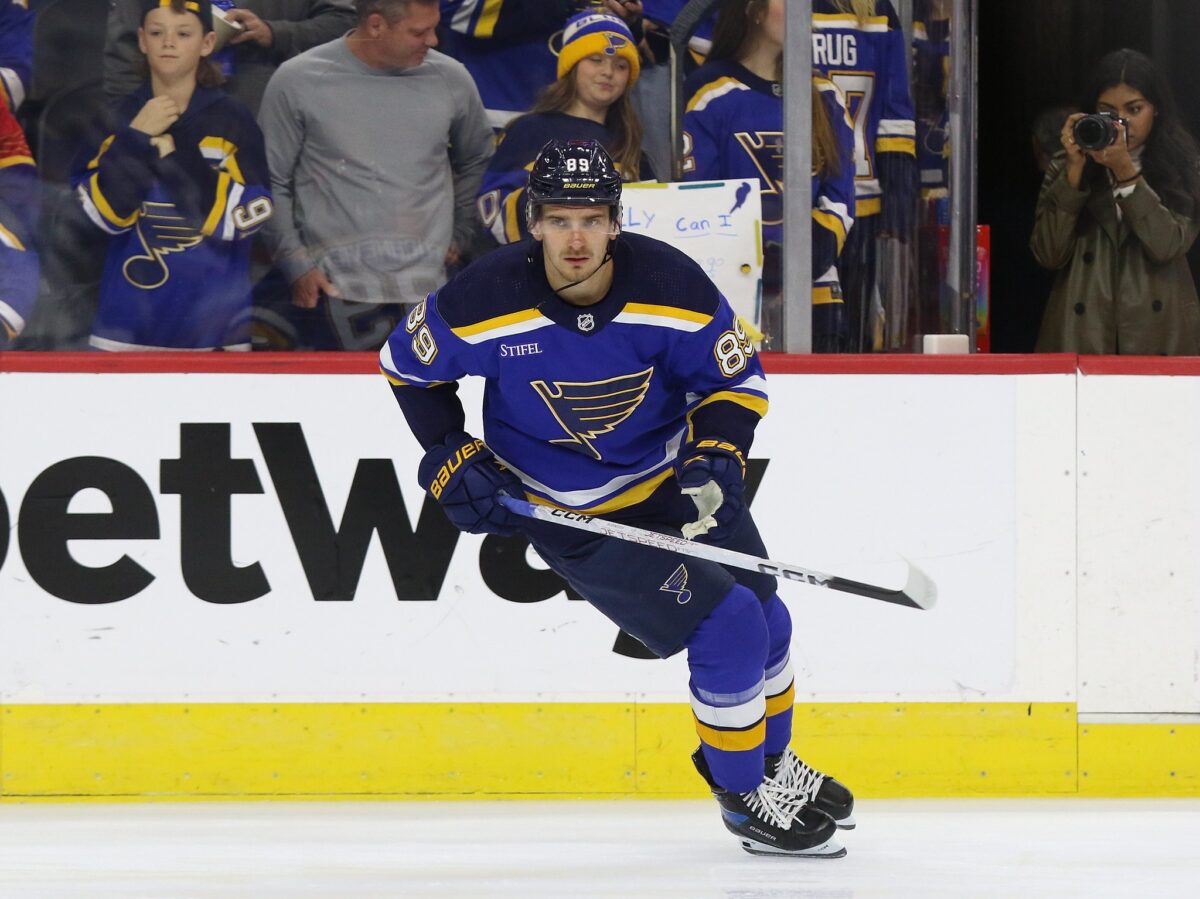
The departure, still rued amongst most of the fanbase as unnecessary (even though it might have been unavoidable), didn’t happen because the player failed to develop. Buchnevich was on the verge of busting into the upper echelon of NHL players at his position at the time of the trade, which looked like a distinct possibility even then. Kakko, meanwhile, has yet to exhibit any signs of a full-on breakout – but if the Rangers ignore the lessons of the Buchnevich experience, they do so at their own peril.
Language Barrier Has Been a Challenge for Kakko
Buchnevich’s early bumps and eventual transformation into a highly-productive NHLer should serve as a reminder that the process is about much more than the development of on-ice skills. Young players are just that – young men, often teenagers or barely into their 20s, trying to find their way not just in the NHL, but through life as recently-anointed adults who retain the traits of youth, even as their responsibilities increase exponentially.
Those old enough to look back now will tell you that they had plenty of growing up to do at that age. That they were still finding their way in the world, in the middle of the process of discovering what kind of person they were going to be.
Almost all of us didn’t have to do that under the watchful eyes of thousands who expected and demanded results on a near-nightly basis while performing in the top organization in their profession. Buchnevich morphed from a dour, occasionally petulant young player into a self-assured, outgoing grown man, his emotional and mental growth mirroring that of his game, with the journey taking a gradual path.
The comparison between the two players is, of course, imperfect. Kakko comes across more as polite, yet maybe just as hesitant as Buchnevich was. Is it completely surprising? Comfortable enough to do interviews in English, Kakko nonetheless takes his time as he searches for the right words. With the brief exceptions of Tarmo Reunanen (four games, 2020-21) and Niko Mikkola (38 total games, 2022-23), there have been no consistent Finnish speakers on the Rangers’ roster since Kakko arrived as the second overall pick in the 2019 draft.
The ability to communicate in one’s native tongue shouldn’t be ignored as a variable in Kakko’s development. Like Kakko, Buchnevich was far from home when he came to New York. Yet from Buchnevich’s second season through his fifth and final one with the Rangers, some combination of fellow Russians Vladislav Namestnikov, Artemi Panarin, Igor Shesterkin and Vitali Kravtsov, along with fluent Russian speaker Alexandar Georgiev, dotted the roster, providing a comfort level that Kakko hasn’t had. For him, talking to teammates and coaches has by and large meant having to communicate in English.
Mikkola said Kakko had “a big smile” when he first walked into the Rangers’ dressing room after being acquired in early February 2023 as part of a trade with the Blues that also netted forward Vladimir Tarasenko.
“I’ve been waiting for that for four years to get some Finnish guy over here with me,” Kakko said then. “All of us here are good guys but sometimes those that speak like you would be a little easier.”
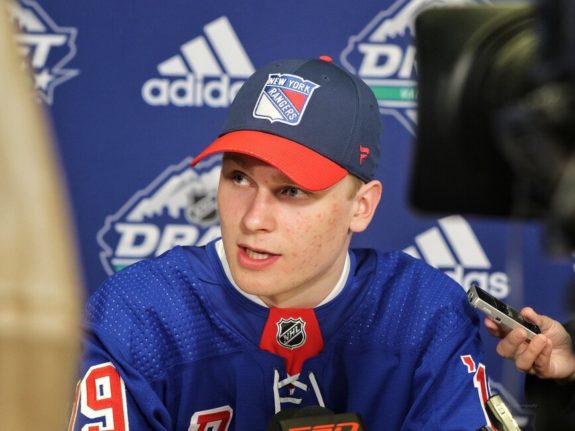
Mikkola is gone now, having signed with the Florida Panthers last summer, and Kakko is back to being the lone Finn on the Blueshirts’ roster.
Buchnevich Never Faced the Pressure of Kakko’s High Draft Position
How one enters the NHL has to be considered a factor as well. Much more is expected of a second overall pick than a 75th, which is what Buchnevich was. The pressure to produce immediately is and has been greater on Kakko than it ever was on Buchnevich during his time on Broadway. Kakko is supposed to develop into a franchise winger; Buchnevich was a third-round “find,” a pleasant surprise when he developed as a top player after years of ups and downs. Amidst his development, Buchnevich was able to mostly avoid the spotlight and inherent urgency placed on Kakko, who was seen as a near-equivalent prospect to No. 1 overall Jack Hughes in his draft year.
There was also the COVID-19 pandemic that interrupted Kakko’s rookie and second seasons, but the point here isn’t to engage in excuse-making (Hughes weathered that disruption well enough to become a point-per-game player by his third season). The bottom line is that amidst Kakko’s halting development path, there are still flashes of the talent that allowed him dominate in Finland’s Liiga as an 18-year-old, and punctuate the performance with six goals in 10 games in the 2019 World Championships to lead the Finns to the gold medal.
The all-around skills that emerged later for Buchnevich have been present through most of Kakko’s young career. There’s no question that despite his limited offensive impact to this point, he drives possession with his ability to control the puck in tight spaces and along the walls. Dating to the beginning of the 2021-22 season, the Rangers have scored 93 goals and given up 71 with Kakko on at 5-on-5. They’ve posted an expected goal share of 50.7 in that span and out-chanced opponents overall, while scoring 52 goals off high-danger chances as compared to 38 given up – a particularly impressive stat for a player who’s never reached the 20-goal mark.
The Rangers’ record with Kakko this season: 35-11-3. Without him: 11-9-1.
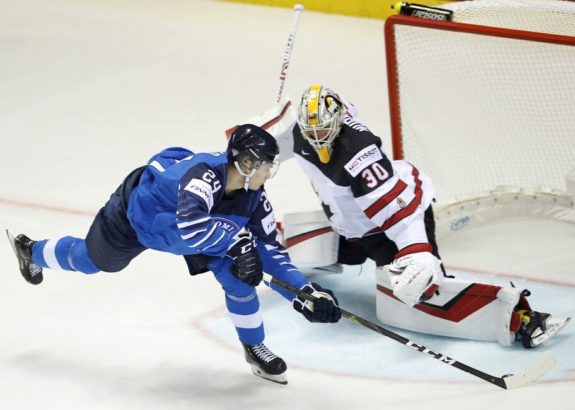
Is that a sign a breakout lurks just around the corner? For general manager Chris Drury, that’s the multi-million dollar question as Kakko completes a two-year, $4.2 million bridge contract and becomes a restricted free agent with arbitration rights this summer. With wing prospects Brennan Othmann and Gabe Perreault on the way, the front office faces a major decision on Kakko’s future – and by extension, the direction of the roster – in a few months, just as it did with Buchnevich three years ago.
Perhaps it’s a matter of growing up. Perhaps it’s Kakko trying to learn how to use his 6-foot-2, 206-pound frame effectively enough in the NHL to unlock the apparent offensive potential that made him a slam-dunk top-two pick. Maybe the differences in the North American game, where time and space are limited as compared to the larger European rinks, are requiring more than 288 career games to adjust to. Maybe Kakko could have spent his 2019-20 rookie season in the American Hockey League instead of the NHL, where he was clearly overwhelmed and totaled 23 points and a minus-26 rating in just 66 games.
Perhaps Kakko will eventually be labeled a bust – or, just a decent player who does plenty of good things, but one unworthy of his draft position. Drury will have to weigh whether he wants to find all of that out with Kakko in a Blueshirt and not a Blues shirt, or some other NHL sweater – just as the GM who traded Buchnevich has unhappily done over the past three seasons.
